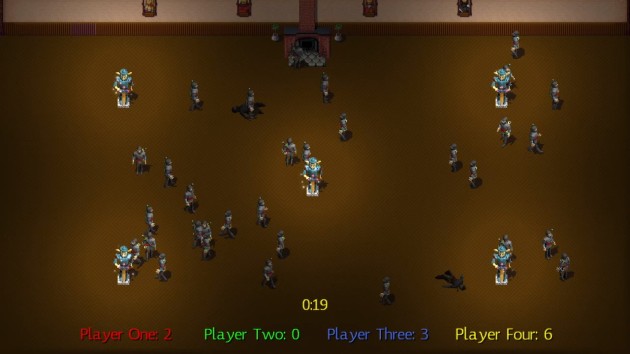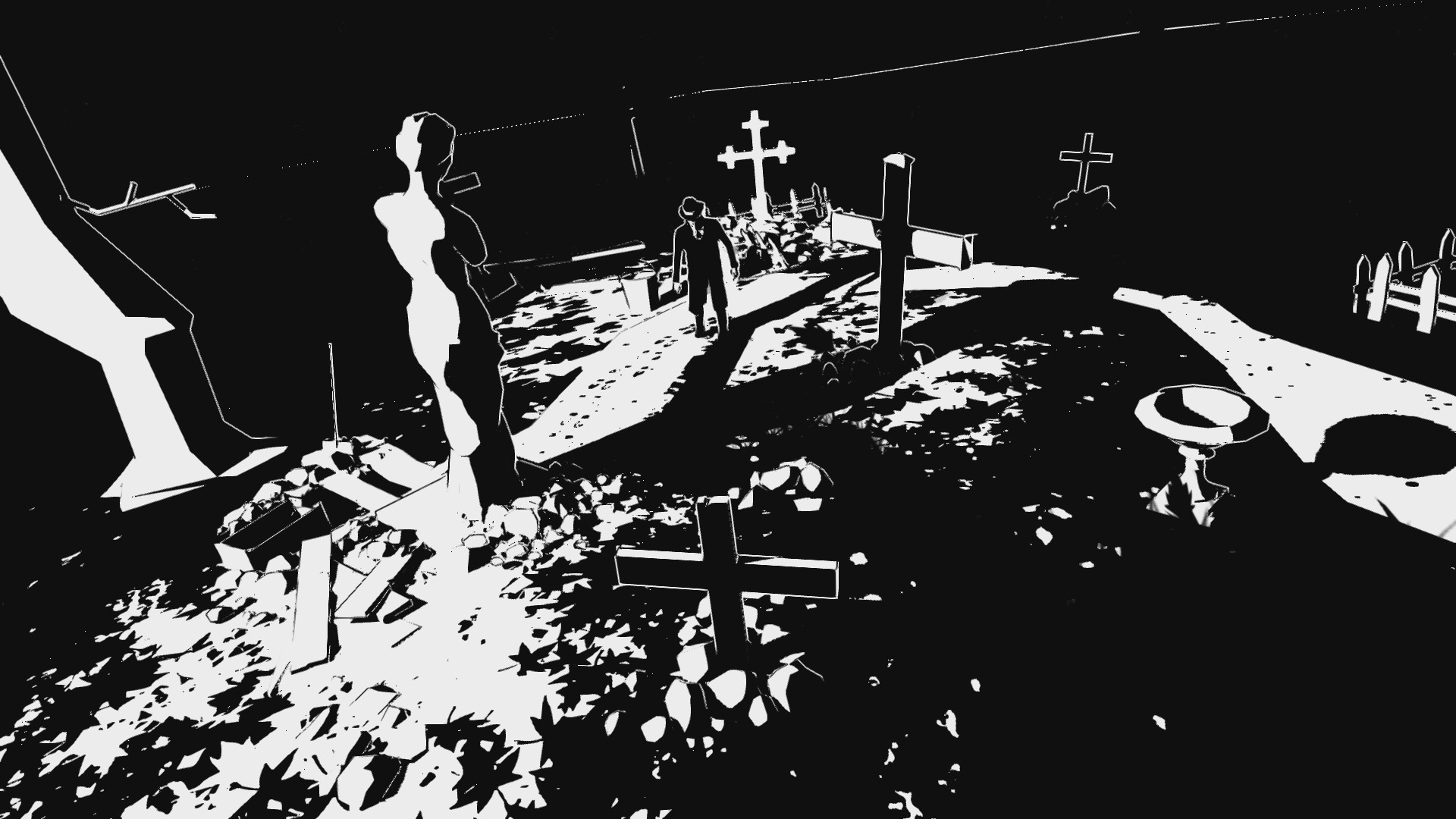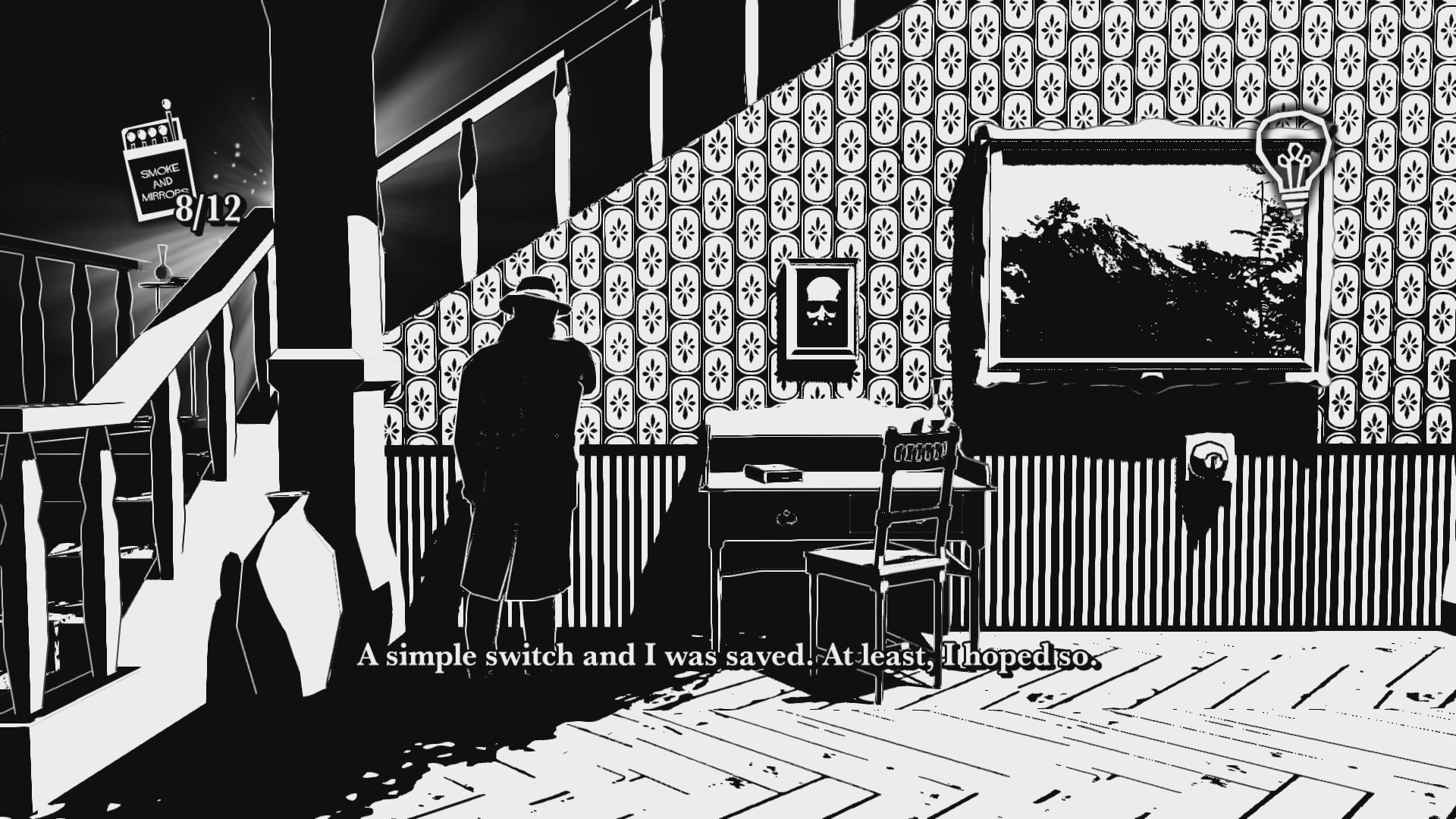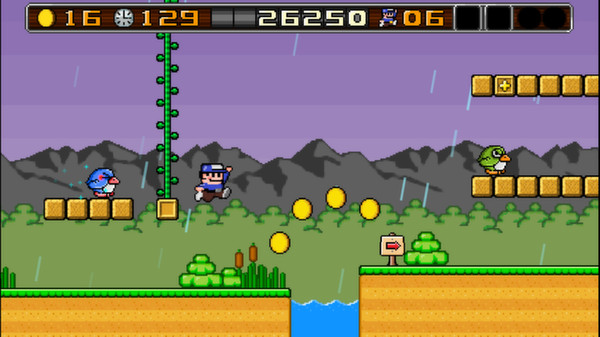YOU HEARTLESS BASTARDS: Hidden in Plain Sight (Review)
December 5, 2022 1 Comment
 YOU HEARTLESS BASTARDS!
YOU HEARTLESS BASTARDS!
How come Hidden in Plain Sight isn’t universally recognized today as one of THE great video game party experiences? That’s a party foul, right there!
Granted, this is now the third game that I’ve had to give YOU HEARTLESS BASTARDS recognition to that got its start on Xbox Live Indie Games. It’s where I got my start doing game reviews, and I know the uphill battle developers had to deal with. Like Escape Goat before it, Hidden in Plain Sight found modest success on Xbox 360 and on Steam. On Nintendo Switch? Nobody talks about about it. I don’t think people quite realize what a truly marvelous party game has been out on their console this whole time. One that, despite what developer Adam Spragg told me, is actually fun for all ages. Well, not all ages. Presumably 2-year-olds wouldn’t be great at this. They’d probably go kill crazy. That’s why they call it the terrible twos: because they make terrible +1s for multiplayer.

Go ninja! Go ninja! Go!
I should note that designer Adam Spragg is someone who I’d consider to be a good friend. No, actually, we go back far enough and have talked enough that I’d go so far as to call him a great friend. We have been ever since after my first review of Hidden in Plain Sight back in 2012. Hell, I consider myself a mediocre-at-best interviewer, but my 2012 interview with Adam is one of my strongest. But, that friendship stuff gets placed in suspended animation when I start playing a friend’s game. My friends would have it no other way. That’s sort of what makes them friends, you know? So, this is the part where I rip my friend’s heart out and say that, in the case of Hidden in Plain Sight, I’m more than a little disappointed that nothing has been done to jazz-up the presentation.

This play session incorporated a rotation of eight players between the ages of 75 to 6. EVERYBODY legitimately won at least one game, including Sasha, my 6-year-old niece (“hey, I’m almost 7!” she said when I shook my head and said “we just pwned by a 6-year-old!”). She touched all five statues in the classic Ninja Mode, being smart enough to not go for kills and thus avoiding detection. Later, she was on the winning team of a Knights Versus Ninjas game AND successfully scored the game-winning kill. Was she one of the better players? No. But, nobody let her win, either. We don’t go for that in our household. You play? You play to win. Little Sasha played to win. This ain’t no Candy Land. I was dang impressed. It also shows that Adam vastly underrated who can play these games. NOT EVERY MODE. Death Race and To Catch a Thief was a little out of her league, but she legit held up her end of the bargain as a teammate in others and was always a threat to steal the free-for-all matches.
Hidden in Plain Sight barely looked fine for a 2012 Xbox Live Indie Game. Now, it’s nearly 2023 and it looks exactly the same as it ever did. Kinda blurry. Kinda low-res. It doesn’t make for an interesting-looking game. If I hired a marching band and had fucking Beyoncé write a jingle about the awesomeness of Hidden in Plain Sight, it’s still going to be a tough sell at the point of sale, which is where most indies are made or broken. Even that goddamned ugly font. The font is something that will turn people off. It makes Hidden in Plain Sight look like an old freeware game. I could see someone who, via word-of-mouth, looks up the game, is totally interested, and then passes when they see the look, and that font. It doesn’t look retro-old. It looks like expired-milk old.

Catch a Thief mode became our least favorite mode. You pass over coins while a number of other players are snipers with limited bullets that must snipe them. There’s a wisdom to the design. The coins don’t just immediately disappear when you touch them. It’d be too obvious then. As for the NPCs, in this mode, you can mark which ones you’re sure aren’t people. My family being made up of slobbering fucking idiots, we all kept marking the real players. We sucked at this. All of us. BUT, I like that you can basically make up your own rules. We all took turns being the lone sniper, and we took turns where one of us was a player. It was fun.
Of course, gameplay is king, and I’m pleased to report that Hidden in Plain Sight absolutely holds up to the test of time. While, yes, games like Assassin’s Creed has multiplayer modes, there’s still never been a local multiplayer game quite like this. The main mode alone gave us over an hour of quality party gameplay over two days. In it, you’re presented with a room filled with dozens of identical ninjas (yes, you can adjust how many, including filling the whole screen if you wish), all of which are non-player characters (NPCs) except you and your fellow players. You don’t know which ninja you are, or which ones are your opponents. Your first task is to figure out where you are in the sea of ninja humanity, and you have to do so without giving away your position. Because, once you know where you are, you must sneakily begin to touch the five statues in the room. Every time you touch one, you score a point, but a chime goes off that alerts the room someone just scored. You can attack and take out characters from the game, but in doing so, you give away your position. There’s a variation of this mode where touching all five statues wins the game for you, but we preferred to stick to the main mode. Once we all got a feel for our own strategies, not to mention mimicry of NPC walking behavior, we kept going back to this mode again and again and it never got boring! It’s seriously such a genius use of video games as a medium for delivering the perfect social experience. It’s museum-worthy.

In Death Race, you’re again a randomly-assigned character in a room full of NPCs where the first challenge if figuring out who you are without giving away your identity. You have two buttons: walk and run. Hold them down to advance towards the finish line on the other side of the room. The NPCs will NEVER run, so you have to walk. The catch is everybody also has a single shot with a sniper rifle to take out anyone who they think is a real player. At one point, I tried to fake out like I was ready to pull the trigger on someone else, when in reality I had the crosshairs over my own character. It nearly worked, until my sister said “SHE’S GIVING HERSELF AN ESCORT!” and I was JFKed soon after. This was everybody’s second-favorite mode. This is the Squid Games a decade before that came out, and it’s AWESOME!
Unlike my previous experience reviewing Hidden in Plain Sight, this time, I was playing with family who actually wanted to play. At least after a few minutes. Hidden in Plain Sight’s worst aspect is that it’s a relatively difficult sell to get a game going. It sounds so much more complicated than it is. In the coming days, I’ll be posting a review of another for XBLIG that released more recently on Switch, Chompy Chomp Chomp (the review linked there is about to become outdated). That one is easy to explain: eat players and don’t get eaten. We played it first, and nobody wanted to move off of it and onto HIPS. Tellingly, when everybody wanted to play a party game again the next day, they wanted to do more rounds of Hidden in Plain Sight. Even those who preferred Chompy voted to play HIPS. I was delighted. I figured I’d have, at best, ninety minutes to check and make sure HIPS could still be fun in the 2020s. We doubled that, and even found that modes I’d previously scoffed at were actually among the highlights.

In my original 2012 game, I played with a bunch of interns at our office and games quickly devolved into letting two of the three royal NPCs die and just puppy-guarding the third. This go around, teams were planning complex “divide and conquer” strategies and rounds could go to the very last seconds before players began to make their moves.
Knights & Ninjas, where you divide into teams that must either assassinate three “royal” NPCs or protect them, became the mode we put the most time into on the second day, to the point that we had a little mini tournament with it. While yes, it does have issues with puppy-guarding, especially if a knight gives away their position killing an NPC by accident (they don’t try to attack the royals) it also proved the old adage “patience is a virtue.” The final match of the tournament was won by my parents when Mom and Dad (the ninjas) defeated Angela and myself (the knights) with two seconds left on the timer. Dad spent a lot of time lingering around the royal family without making his move, to the point my sister and me, and everybody watching, had him pegged as an NPC. I wasn’t bitter at all when I said “wow, congratulations Dad, you sure pulled off being a mindless drone convincingly!”

This is a last-assassin-standing type of mode where the playfield progressively shrinks into a circle. This was the only mode not every observer was interested in trying their luck at. That’s REALLY telling to me. It proves beyond a shadow of a doubt that it’s the deception and sneakiness that’s the attraction in Hidden in Plain Sight, whereas the killing is not that fun. In fact, the biggest fight in our house over HIPS was nobody wanted to be the snipers, to the point that we had to make a rule that everybody had to take a turn with the guns. Wow, I didn’t expect that. Even the little kids enjoyed learning to walk like NPCs and eventually were winning games with consistency. It’s a game that you WANT to get better at. Where winning feels rewarding.
So, even though it took a decade to get there, Hidden in Plain Sight now seems fated to be like an old, yellowing board game with split-corners on its box that’s tucked in our closet. Something to bust out not just when we have guests over, but also when we have free time and nothing better to do. I certainly underrated it before. It’s why I’m bumped-it-up nearly one-hundred positions higher on the IGC Leaderboard. Like many great board games, you need three other people. There’s no online play, because the charm is totally lost without everybody in the same room. You also need players who have the right mindset. If someone has overactive adrenal glands and goes stab-happy, it’ll ruin the fun for everybody else, as people going stab-happy tends to do. But, with the right group? Even observers can have fun trying to suss-out who is real and who is an NPC. Despite the archaic graphics, Hidden in Plain Sight sure feels like it’s going to be kind of timeless. Ten years later and, if anything, I think it somehow managed to get better with age. Of course, being someone who cheers for every game to find success, I still wish Adam would redo this with modern graphics. Maybe then you heartless bastards would give it a chance.
 Hidden in Plain Sight is Chick-Approved
Hidden in Plain Sight is Chick-Approved
Leaderboard Ranking: #87 of 306 Indie Gamer Chick-Approved Indie Games*
Top 86.4 Percentile of All 640 IGC-Reviewed Indie Games
Top 71.5 Percentile of All 306 IGC-Approved Indie Games
*Rankings based on time of publication. Check the Leaderboard for updated standings.
 Hidden in Plain Sight was developed by Adam Spragg
Hidden in Plain Sight was developed by Adam Spragg
Point of Sale: Nintendo Switch, Steam
$5.99 gave up its position in the making of this review.


 Arsonville was developed by
Arsonville was developed by 

 Mystery Castle was developed by
Mystery Castle was developed by  $9.99 (I think, not sure what I paid for the Ouya version) said “Thank you to all my readers for five incredible years of support. Here’s to the next fifty!” in the making of this review.
$9.99 (I think, not sure what I paid for the Ouya version) said “Thank you to all my readers for five incredible years of support. Here’s to the next fifty!” in the making of this review.






















You must be logged in to post a comment.